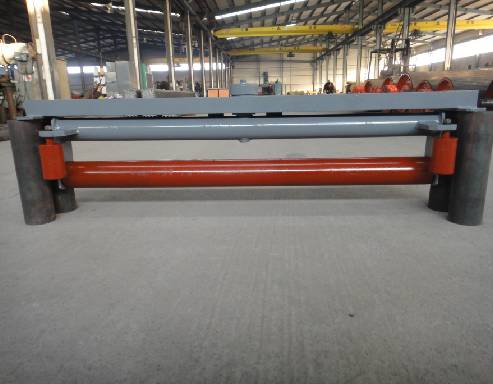 Afrikaans
Afrikaans  Albanian
Albanian  Amharic
Amharic  Arabic
Arabic  Armenian
Armenian  Azerbaijani
Azerbaijani  Basque
Basque  Belarusian
Belarusian  Bengali
Bengali  Bosnian
Bosnian  Bulgarian
Bulgarian  Catalan
Catalan  Cebuano
Cebuano  Corsican
Corsican  Croatian
Croatian  Czech
Czech  Danish
Danish  Dutch
Dutch  English
English  Esperanto
Esperanto  Estonian
Estonian  Finnish
Finnish  French
French  Frisian
Frisian  Galician
Galician  Georgian
Georgian  German
German  Greek
Greek  Gujarati
Gujarati  Haitian Creole
Haitian Creole  hausa
hausa  hawaiian
hawaiian  Hebrew
Hebrew  Hindi
Hindi  Miao
Miao  Hungarian
Hungarian  Icelandic
Icelandic  igbo
igbo  Indonesian
Indonesian  irish
irish  Italian
Italian  Japanese
Japanese  Javanese
Javanese  Kannada
Kannada  kazakh
kazakh  Khmer
Khmer  Rwandese
Rwandese  Korean
Korean  Kurdish
Kurdish  Kyrgyz
Kyrgyz  Lao
Lao  Latin
Latin  Latvian
Latvian  Lithuanian
Lithuanian  Luxembourgish
Luxembourgish  Macedonian
Macedonian  Malgashi
Malgashi  Malay
Malay  Malayalam
Malayalam  Maltese
Maltese  Maori
Maori  Marathi
Marathi  Mongolian
Mongolian  Myanmar
Myanmar  Nepali
Nepali  Norwegian
Norwegian  Norwegian
Norwegian  Occitan
Occitan  Pashto
Pashto  Persian
Persian  Polish
Polish  Portuguese
Portuguese  Punjabi
Punjabi  Romanian
Romanian  Russian
Russian  Samoan
Samoan  Scottish Gaelic
Scottish Gaelic  Serbian
Serbian  Sesotho
Sesotho  Shona
Shona  Sindhi
Sindhi  Sinhala
Sinhala  Slovak
Slovak  Slovenian
Slovenian  Somali
Somali  Spanish
Spanish  Sundanese
Sundanese  Swahili
Swahili  Swedish
Swedish  Tagalog
Tagalog  Tajik
Tajik  Tamil
Tamil  Tatar
Tatar  Telugu
Telugu  Thai
Thai  Turkish
Turkish  Turkmen
Turkmen  Ukrainian
Ukrainian  Urdu
Urdu  Uighur
Uighur  Uzbek
Uzbek  Vietnamese
Vietnamese  Welsh
Welsh  Bantu
Bantu  Yiddish
Yiddish  Yoruba
Yoruba  Zulu
Zulu different types of conveyor rollers
Different Types of Conveyor Rollers
Conveyor rollers are essential components in material handling systems, facilitating the movement of goods across various industries. These cylindrical devices are installed in conveyor systems to enable smooth transportation of products, packages, and materials. Depending on the application, environment, and type of materials being handled, different types of conveyor rollers are utilized. Understanding these variations can help businesses choose the right equipment for their specific needs.
1. Flat Rollers
Flat rollers are the most basic type used in conveyor systems. They possess a simple, cylindrical design and are typically made of steel or plastic. Flat rollers are ideal for conveying light to moderate loads along straight paths. They provide good support, ensuring that products remain stable as they move. These rollers are commonly used in assembly lines, packaging processes, and in warehouses for transporting goods.
2. Grooved Rollers
Grooved rollers feature a series of grooves running along their length, which help with grip and stability. These grooves are especially beneficial for transporting items that may slide off flat surfaces, such as boxes or bags. Grooved rollers are often found in belt conveyors, where they help maintain the alignment of the belt while ensuring smooth movement. They are widely used in the manufacturing and distribution sectors.
Tapered rollers are designed with a cone-like shape, narrowing towards one end. This design allows for effective guiding of products as they navigate turns in conveyor systems. Tapered rollers reduce the chances of products becoming misaligned or falling off the conveyor. They are typically utilized in systems where directional changes are frequent, such as in sorting or packaging operations.
different types of conveyor rollers

4. Idler Rollers
Idler rollers are not powered and do not drive the movement of the belt. Instead, they support the weight of the conveyed items and help maintain the alignment of the conveyor belt. Idler rollers can be flat, grooved, or crowned, and their primary function is to reduce friction and wear on the conveyor system. They are crucial for ensuring operational efficiency and are commonly found in various types of conveyor belts.
5. Drive Rollers
Drive rollers, also known as powered rollers, are equipped with a motor that drives the belt. These rollers provide the necessary force to move products along the conveyor system. Drive rollers are essential in situations requiring higher speeds or heavier loads. They are often used in logistics and material handling operations to facilitate efficient movement in warehouses and distribution centers.
6. Crowned Rollers
Crowned rollers are designed with a slight curvature along their diameter, which helps keep the belt centered on the roller. This design is particularly useful in belt conveyor applications where alignment can become an issue. The crowned shape minimizes the risk of the belt drifting off the edge of the roller, ensuring smooth operation and reducing wear on both the belt and the rollers.
Conclusion
Selecting the right type of conveyor roller can significantly impact the efficiency and reliability of a material handling system. Understanding the various types of rollers—flat, grooved, tapered, idler, drive, and crowned—allows businesses to tailor their equipment to meet specific operational requirements. By investing in high-quality conveyor rollers, companies can enhance productivity, minimize wear and tear on their equipment, and ultimately improve their bottom line. As industries continue to evolve, the importance of effective material handling solutions remains paramount, and conveyor rollers will continue to play a critical role in this process.
-
Revolutionizing Conveyor Reliability with Advanced Rubber Lagging PulleysNewsJul.22,2025
-
Powering Precision and Durability with Expert Manufacturers of Conveyor ComponentsNewsJul.22,2025
-
Optimizing Conveyor Systems with Advanced Conveyor AccessoriesNewsJul.22,2025
-
Maximize Conveyor Efficiency with Quality Conveyor Idler PulleysNewsJul.22,2025
-
Future-Proof Your Conveyor System with High-Performance Polyurethane RollerNewsJul.22,2025
-
Driving Efficiency Forward with Quality Idlers and RollersNewsJul.22,2025





























